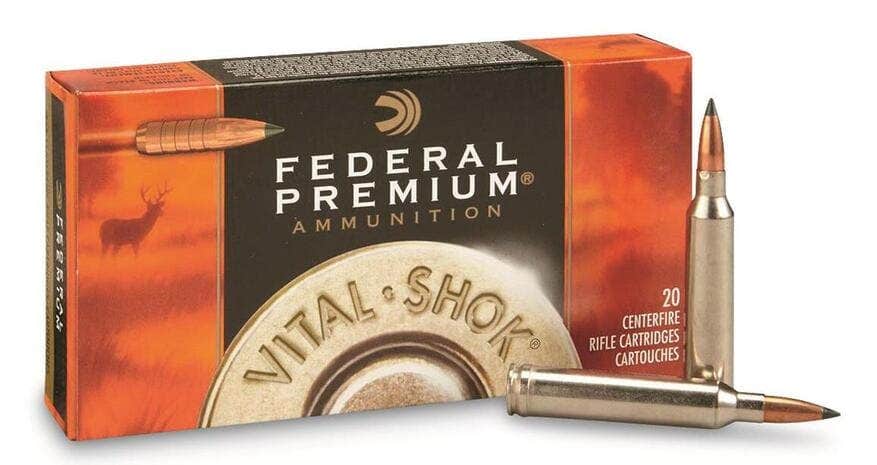History of the AR-10 Platform
Eugene Stoner developed the AR-10 in the late 1950s while working for ArmaLite, a company only a few years old at the time. The firearm—built around the .308 Win. cartridge—is more popular than ever, thanks to this modern sporting rifle’s ability to perform at longer-distance than its younger, lighter AR-15 sibling. Today’s models are also available in a wide variety of chamberings, which means there is likely one out there ideal for your shooting preference and style. The most common AR-10 calibers include 308 Winchester (7.62x51 NATO), .243 Win, 6.5 Creedmoor, .338 Federal, and .300 Win Mag. Here’s a look at the most popular calibers for today’s AR-10, and why some are better than others at long distances.
Bigger by Design
By the 1950s the growing Communist Bloc menace was obvious, and the Pentagon understood it needed to replace the aging .30-’06 Sprg.-chambered M1s that served so well in World War II. When a call went out for manufacturers to submit test samples for the small-arms contract, submissions included the original version of the AR-10 and the M14. Both were chambered in the relatively new .308 Win., which was introduced by Winchester in 1952. After subtle modification, the North Atlantic Treaty Organization (NATO) officially adopted the cartridge in 1957 and labeled it 7.62 NATO.
That same year the U.S. military decided the M14 would be the Army’s new rifle. The news didn’t dampen Stoner’s enthusiasm for the innovative gas impingement method of operation he patented, though. He went on to create a scaled-down version of his design, chambered in 5.56 NATO, that would later serve as the M16 during the Vietnam War. M4 versions stand at the front line on the global war on terrorism to this day. AR-15s are semi-auto, American commercially available variants, but their smaller size and specifications limit their ability to handle cartridges that traditionally perform at long distance.
AR-10 Calibers

.308 Win. / 7.62 NATO
The vast majority of AR-10 rifles and uppers available today, like those from Bear Creek Arsenal, run 308 Ammo. They perform safely and well when 7.62 NATO ammunition is pressed into service. Reversing that combination raises a few concerns.
Despite the fact the cartridges are nearly identical in dimensions, subtle differences in a 7.62 NATO rifle are there to improve reliability during the high rates of fire often encountered by the military. Headspacing, for example, in a 7.62 NATO chamber is slightly longer. A .308 Win. cartridge fits nicely, but that added expansion room increases the risk of ruptured cases. That’s never a pleasant experience and not exactly operationally efficient in a semi-automatic rifle.
Problems are either rare or never occur because the Sporting Arms and Ammunition Manufacturers’ Institute does not list running .308 Win. in a 7.62-chambered gun as an unsafe combination. There is, however, a 2,000 pounds per square inch (psi) difference in the maximum pressures generated by each cartridge. It’s not much, but with the .308 Win. cartridge coming in at 62,000 psi, it’s worth considering before you toss one into a gun that might be nominally designed to handle 7.62 NATO’s 60,000.
Reliability aside, an AR-10 chambered for .308 Win. has another advantage. It doubles ammunition selection. When cartridges are in short supply the benefit could keep you at the firing line and squeezing the trigger. Add the fact that a wide variety of loads are available in .308 Win.—from match-grade, to hunting, practice and home defense—and an AR-10 in this chambering is hard to beat and an enthusiast favorite today. [Read our article about 308 vs 5.56 and check out our AR10 barrels and AR10 complete upper assemblies chambered in 308!]

.243 Win.
Another of the most popular calibers for today’s AR-10 is the .243 Win. It’s a soft-recoiling cartridge that’s a joy to shoot, particularly in this gas-operated semi-auto rifle.
If medium-sized, thin-skinned game is on the schedule this fall, take a close at this one. Small-stature shooters and those new to the sport will be eager to practice and, as a result, better prepared to make that one-shot-stop on opening day.
There are drawbacks, however. The one most often cited is the fact that the cartridge doesn’t live up to the long-distance capabilities of most AR-10 compatible cartridges. The bullets also have a tendency drift more in the wind. Consensus has it that a .243 Win. is a medium-range cartridge, paling by comparison to the performance and predictability of the .308 Win.

6.5 Creedmoor
The growing popularity of this cartridge and availability of loads will likely move this AR-10 chambering up in popularity fast. It’ll be tough for it to take over the .308 Win. throne, but enthusiasm for 6.5 Creedmoor shows no sign of slowing.
It’s soft shooting, with practiced hands connects in boring fashion at 500 meters and manufacturers offer a variety of bullet styles/loads. It’s hard to beat for hunting, competition, or impressing your friends by ringing downrange steel they can’t touch. [Learn more about the 6.5 Creedmoor caliber in our article 6.5 Creedmoor vs 308!]

.338 Federal
Don’t let the number scare you off. The cartridge is comfortable to shoot from an AR-10. With a bullet diameter of .338 inch, it delivers the kind of power downrange ideal for big game hunting.
That big bullet increases drag during flight, however, which slows the projectile down, adds wind drift and increases drop at distance more than other AR-10 cartridges. Know your ballistics, and more importantly your capabilities, and it’s a still a solid choice.

.300 Win. Mag.
AR-10 rifles or uppers made for .300 Win. Mag. aren’t exactly plentiful, although the cartridge’s enviable reputation for cloverleaf groups on targets two zip codes away makes them undeniably attractive. The track record in the hands of our nation’s military precision shooters in Afghanistan and Iraq speaks volumes about the ammunition’s performance.
Their platforms, however, are usually bolt-action rifles and recoil is stout. Stoner’s gas operation mitigates some of it in the AR-10. Before you go shopping, though, be prepared for some sticker shock. This modern sporting rifle version, regardless of manufacturer, is built tough to handle the pressure and prices reflect the fact.
AR-10 at Distance
The advantages of an AR-10 at long distance, compared to an AR-15, are obvious in retained bullet energy at 500 yards. The numbers from Federal Premium’s Fusion loads illustrate the point and keep the comparison apples-to-apples.
The company’s .223 Rem. offering in the line is carrying 384 ft.-lbs. of energy at 500 yards. It sounds like a lot from the AR-15’s most common cartridge, but the figure pales by comparison to those cartridges AR-10’s are capable of chambering.
Federal’s .308 Win. Fusion load (165-grains), for example, hits with an authoritative 1,173 ft.-lbs. at 500 yards. The company’s .338 Federal load arrives at that distance convincingly with 1,334 and even the relatively lightweight .243 Win. comes in at 725. The difference is a significant one for big game hunting and performance at long distance.
Consider, too, what happened when the Global War on Terrorism went full scale in Afghanistan. The 5.56 NATO M4s couldn’t connect reliably in the rugged country’s long distance, ridgeline to ridgeline engagements. The U.S. military remedied the situation by pulling those .308 Win. M14s out of mothballs, retrofitting them and putting them in the hands of their deployed designated marksmen. The aging fleet of rifles made a huge difference.
Other Calibers
The drive to invent thrives in the firearm industry and, as a result, AR-10s today exist for many different cartridges. Manufacturers introduce them with surprising regularity at the annual Shooting, Hunting and Outdoor Trade Show and a few enthusiasts experiment and eagerly develop their own. The odds are good some are in the works right now in garages and factories across the globe. Those facts make any attempt at a comprehensive AR-10 chambering list, including this one, futile.
However, those you may have also read about or seen in video are models chambered for .22-250 Rem., 6 mm Creedmoor, .260 Rem., 7 mm-O8 Rem., .358 Rem. and even the .300 SAUM experimented with by the U.S. Army Marksmanship Unit. There are more and you’re lucky you might catch a glimpse of a few at the range, perhaps even get the chance to work the trigger.
Don’t be surprised when something new and different appears. Much like Stoner’s response when the AR-10 was rejected by the U.S. military, firearm enthusiasts know there’s almost always some way to make things different and, with luck, better than before.
In the meantime, if you’re in the market for an AR-10 rifle or AR-10 upper, weigh the advantages of a .308 Win. model before you buy. The combination of a time-proven, budget-friendly design that harnesses a battle-proven cartridge’s performance is hard to beat.
[We'd like to extend a huge thank you to Guy Sagi for his hard work on this article. Check out our other helpful articles like AR10 vs AR15 and Side Charging ARs. Comment your favorite AR-10 caliber below!]





